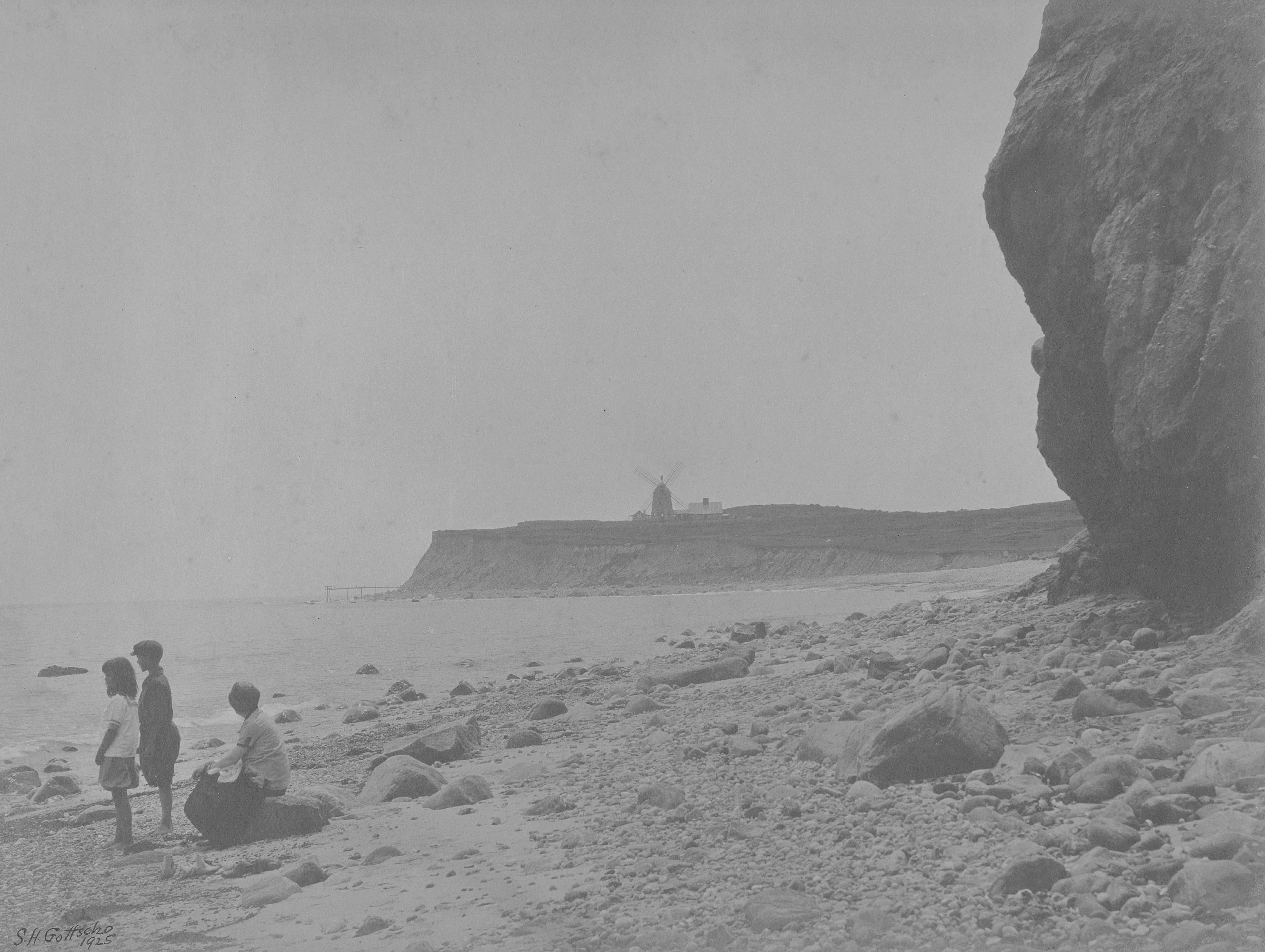

In January of 1942, the Army took over 468 acres next to the Montauk Lighthouse to create a coastal defense station — what today we call Camp Hero. Remote yet strategically vulnerable, almost all of Montauk would come to be occupied by the U.S. military during World War II.
“You had the Coast Guard up at the lighthouse, the Navy at Fort Pond [Bay], the Army at Camp Hero, the Signal Corps was out at the lighthouse at that time,” Vinnie Grimes recalled in an interview for the book American Gibraltar. He recalled seeing “flashes out in the ocean – it was German U-boats hitting tankers and cargo ships that were headed for Europe to help in the war effort.”
The Montauk Manor was turned into a barracks; officers were headquartered in the Carl Fisher office building. Star Island became a Navy auxiliary base; private yachts were dispatched as patrol boats to look for submarines.
Ultimately there were 600 enlisted men and 37 officers stationed at Camp Hero, which was disguised as a fishing village but housed anti-aircraft and machine gun emplacements.
At Montauk Point, the families of lighthouse keepers moved out while the Coast Guard took over watches. To escape the notice of the Nazis, a 1,000-watt bulb was switched out for a 100-watt one. The U.S. military took over the nearby Wyandanee Inn.
There was also the matter of the windmill at the Lathrop Brown estate. Built in Southampton in 1813, it had been moved to Wainscott, where, by 1912, it became the Wainscott Public Library, according to Windmills of Long Island.
The wealthy Lathrop Brown (whose father was a founder of the Brown, Harris, Stevens real estate firm) bought the windmill in 1922. It was moved to Montauk, where he had a cottage built on property purchased from the heirs of Arthur Benson. Set on the rugged cliffs just west of the lighthouse and attached to the cottage, the old mill contained a sitting room as well as two upstairs bedrooms.
Exposed though it was, the mill had survived the 1938 hurricane, but, after the government took over the property, Lathrop Brown was given six months to remove it or see it destroyed. His garage was purchased by Mary Smith and moved to the Montauk fishing village, the East Hampton Star reported shortly after the 1942 deadline. The main cottage was moved by D. Stewart Iglehart of Westbury to his property near Gurney’s Inn. For the windmill, Mr. Brown found a new owner in one G. Pierson, a Yale history professor and the owner of a summer house in the Georgica Association.
“That perambulating windmill, built in Southampton in 1813; moved to Wainscott in 1852; moved by Mr. Brown to Montauk Point in 1922, has once again taken to the road,” the Star said.
“Wainscott had regretted, ever since 1922, the removal of its only windmill within living memory; and was delighted to have it back again.”

Reply or Comment